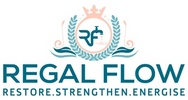
Reverse Osmosis and Osmosis Difference
Ever wonder why plants sip while your filter chugs? Osmosis is nature’s way of moving water, but reverse osmosis is an engineered marvel for purification. For those who want to examine the underlying science, our In-Depth Insights into Reverse Osmosis Systems and Applications is the perfect starting point, but follow along here to see how that technology translates to the crisp, clean glass in your hand
What is Osmosis?
Natural Process of Osmosis
Think of osmosis as nature’s quiet little balancing act. It's how water sneaks through a semipermeable membrane; from a place with fewer particles to one with more until everything evens out. No power source, no noise. Just water doing its thing to keep balance. It’s essential for life and happens constantly in our bodies. Ever wondered how your body knows how much water to absorb after a long run? That’s osmosis in action. Your intestines use it to pull water from food. Your kidneys rely on it to filter waste and keep your body hydrated. And in plants? Roots drink up water from the soil using osmosis—no straws needed.
What is Reverse Osmosis?
Mechanism of Reverse Osmosis
Now imagine flipping osmosis on its head. Instead of water moving naturally, reverse osmosis (RO) pushes it in the opposite direction; using pressure. Water is forced through a super-fine membrane that traps all the nasties: salt, chemicals, even bacteria. You get clean, pure water on one side and the junk left behind on the other. It’s like squeezing perfection out of a polluted sponge.
Applications in Water Treatment
Reverse osmosis is the secret sauce behind many water purification systems. It’s what makes salty seawater drinkable. It’s how homes, factories, and even space missions ensure their water is safe. From your kitchen sink to industrial clean rooms, RO keeps things flowing cleanly. It’s especially vital in areas with poor water quality or high contamination levels.
Key Differences Between Osmosis and Reverse Osmosis
Direction of Solvent Movement
Let’s break it down. Osmosis moves water from high to low concentration—like water rolling downhill. Reverse osmosis? It’s water marching uphill—thanks to a mechanical push. One’s chill and natural; the other’s got an energy boost and a purpose.
Energy Requirements
Osmosis doesn’t need any external help. It’s passive, quiet, and effortless. Reverse osmosis, on the other hand, demands pressure, either from a pump or gravity system. That energy helps it overcome natural resistance and push water the "wrong" way through the membrane.
Practical Applications
Osmosis is biology’s best friend. It’s happening inside you right now, balancing fluids in your cells. Reverse osmosis is your kitchen’s MVP—turning questionable tap water into crisp, clean hydration. One supports life, the other improves it.
Advantages and Disadvantages
Benefits of Osmosis
Osmosis helps living organisms function. It’s the reason your cells stay plump, hydrated, and balanced. Nutrients come in, waste goes out—all powered by osmosis. And it does all this without using up your energy. Nature really nailed this one.
Limitations of Osmosis
But osmosis has its limits. It only works in biological systems. You can’t purify water with it alone. It’s also sensitive e.g changes in pressure or solute levels can throw it off. Great for cells, not for cleaning up dirty water.
Benefits of Reverse Osmosis
Reverse osmosis is like having a mini water treatment plant at home. It removes up to 99% of contaminants like lead, fluoride, nitrates, and microplastics. Ideal if you live in areas with poor tap water. It's also widely used in hospitals, factories, and even coffee shops. Clean water, anywhere, anytime.
Limitations of Reverse Osmosis
But all that power comes with a cost. RO systems need pressure, which means energy. They also waste some water during filtration; sometimes up to 4 litres for every litre you drink. Plus, they need regular filter changes to keep working properly. Still, for many, the benefits outweigh the drawbacks.
Conclusion
Summary of Differences and Applications
Osmosis and reverse osmosis might sound like twins, but they’re not. Osmosis is a passive process happening in every living thing—it keeps our cells functioning. Reverse osmosis is an active, high-efficiency way to clean water. One keeps you alive; the other keeps your water safe to drink. Understanding both helps us appreciate how life maintains balance—and how we’ve learned to engineer that balance for our needs. Whether it's nature’s quiet trick or high-tech purification, osmosis and reverse osmosis both deserve their spotlight.
More Reverse Osmosis info we think you'll love
How Many Stages Does Reverse Osmosis Have?
Reverse Osmosis and Ultrafiltration
Reverse Osmosis and UV Water Filter
Reverse Osmosis vs Ultrafiltration
Reverse Osmosis vs Deionized Water
Reverse Osmosis vs Gravity Filter
Reverse Osmosis vs Hydrogen Water
Can Reverse Osmosis Remove Microplastics?
Reverse Osmosis Water Treatment Plant


Leave a comment